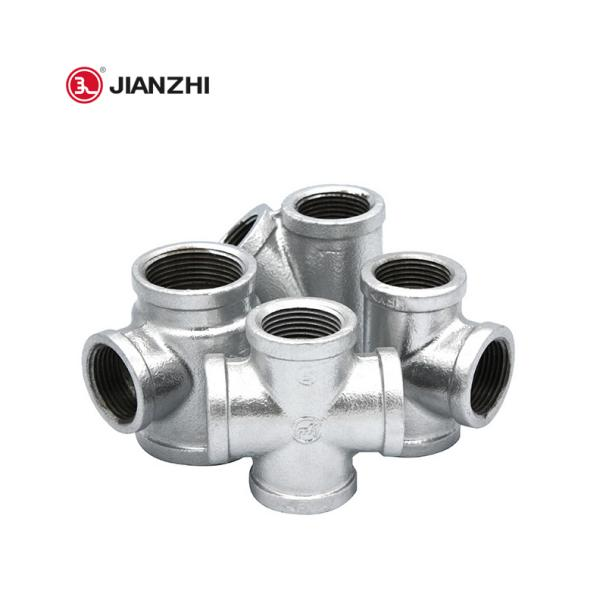Feb. 27, 2024
Pipe fittings are an integral part of the piping system, and they play a key role in connecting, diverting, and controlling fluids. Different types of fittings are used for different projects and purposes, and it is vital to understand the types of these fittings, their importance, and their respective benefits to ensure the smooth operation of your piping system.
Pipe fittings play a vital role in piping projects. They not only connect the various parts of the pipeline, but they are also able to adapt to different working conditions, including high temperatures, high pressures, and corrosive environments. Proper selection and use of pipe fittings can help improve piping systems' efficiency, reliability, and safety.

Importance No. 1:connecting pipes
Piping systems usually contain many pipe segments, and fittings are the tools used to connect these pipe segments. Different fittings allow for connections, such as welded, threaded, and clamped connections. This flexibility makes it easier to install and maintain piping systems.
Importance No. 2: Controlling Fluids
Pipe fittings are also used to control the flow and pressure of fluids. Precise control of the fluid can be achieved by installing valves, elbows, and other control devices. This is essential for industrial processes requiring specific fluid conditions, such as chemical and power plants.
Importance 3: Adapt to different working conditions
Piping systems are often exposed to various environments and conditions, including high and low temperatures and pressures. Different materials and types of pipe fittings can meet these different working conditions and ensure the stable operation of piping systems.
Different types of pipe fittings are designed for different needs and applications. Here are some common types of pipe fittings:
Elbows
Elbows are fittings used to change the direction of piping and can be categorized into different angles, such as 45 degrees and 90 degrees. They are typically used where pipe turning is required to accommodate specific layouts and space constraints.
Pipe Caps
Pipe caps are used to close off one end of a pipe to prevent fluid leakage and to protect the inside of the pipe from the outside environment. Caps also serve to facilitate handling when repairing and cleaning pipes.
Pipe Fittings
Pipe fittings are used to connect two sections of piping and help to extend or branch the piping. They are available in various designs, including flanged and threaded connections, etc., to meet different needs.
Flanges
A flange is a flat, ring-shaped piece used to connect pipes, usually by bolting. Flanges are widely used in systems that require frequent disassembly and repair, such as in the chemical and petroleum industries.
1. Advantages of elbows
Elbows are available in various angles, which can be adapted to different piping layouts, reduce the bending radius of piping, and improve the fluid transmission efficiency of the system. At the same time, elbows are more flexible in installation, reducing the difficulty of piping system design and construction.
2. Advantages of pipe cap
The pipe cap can effectively close the pipeline to prevent external impurities from entering the piping system, improving the system's operational stability. It is also relatively easy to dismantle and install the cap when maintaining and cleaning the pipeline, reducing maintenance costs and time.
3. Advantages of pipe joints
Pipe joints can flexibly connect pipes, making the system more expandable. Through rational design and selection of pipe joints, the resistance of the piping system can be reduced, and the efficiency of fluid transmission can be improved.
4. Advantages of flanges
The advantage of flange connection is easy to disassemble and maintain. When it is necessary to overhaul or replace the piping section, the flange can be disassembled by simply loosening the bolts without affecting the normal operation of the entire piping system. This facilitates the maintenance of the system.
Fittings used to extend or terminate piping: e.g., pipe couplings, adapters, flappers, caps, and pipe plugs.
Fittings used to change the direction of a pipe: for example, elbows
Fittings used to connect two or more pipes: e.g., tees, crosses, side entry elbows, wyes
Fittings used to change the size of a pipe: e.g., reducers, sleeves, couplings
Pipe fittings used to manage or regulate flow: e.g., valves
Pipe installation tools: e.g., pipe fasteners
Pipe flanges
Overall, pipe fittings, as an important part of a piping system, come in various types, each with its advantages. Choosing the right type of pipe fittings and designing the piping system properly is essential to ensure the safe and efficient operation of the system.JIANZHI, an excellent and high-quality pipe fittings manufacturer, has many years of experience in pipe fittings manufacturing and has gained a certain degree of popularity overseas; if you have any questions about purchasing pipe fittings, you can contact us!
SAFER
PRODUCT INFO
ABOUT JIANZHI
TECH DATA
Contact Us
E-mail: sales1@jianzhi-fitting.com
Tel: +86 18698027872
Office In Tianjin:
Heping District, Tianjin, China.
Production Base 1:
Chifeng, Inner Mongolia, China.
Production Base 2:
Tangshan City, Hebei Province, China.
Production Base 3:
Schelei Street,Baicoi City,Prahova County,Romania
Service email: info.ro@jianzhi-fitting.com
Sales email: market.ro@jianzhi-fitting.com
Tel: +40(755)011 849
